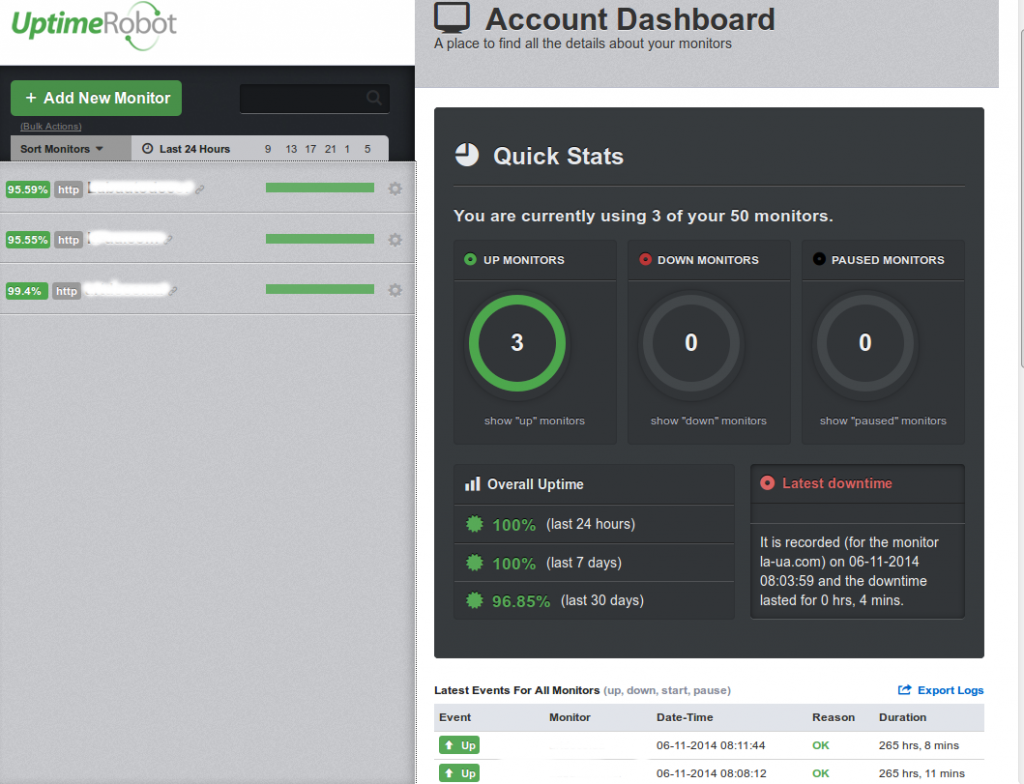Website monitoring is the process of monitoring performance, uptime, availability and functionality of websites. Website monitoring is used by corporates to control the site 24/7, avoid unexpected server downtime which can lead to site visitors losses.
Nowadays there are web services ( free and paid services) that help to check your website and notify you so that you could quickly take the necessary actions in case of a downtime.
Most popular website monitoring types used by best monitoring tools :
- Performance website monitoring
- Full-page website monitoring
- Website uptime and response time monitoring
- Performance website monitoring – the monitoring agent performs a specified request and downloads the header and all web page contents without images and other embedded objects, simulating repeat user to your web site.
- Full-page website monitoring – full page load monitoring clocks the time it takes to load a complete HTML page in real browsers and allows to improve real user experience and satisfaction levels.This monitoring service gives you real insight into what your end-users are experiencing with your website.
Full-page website monitoring features:
- Detailed timelines of each individual request
- Load times of all images, CSS, JavaScript, RSS, Flash, frames
- Breakdowns of page loads per components
- Alerts when elements of any page don’t load(e.g., “404 error”)
Uptime monitoring service includes:
- Site uptime checking using HTTP, HTTPS, PING, DNS
- Monitoring availability and performance from different countries
- Email tracking using SMTP, POP3, IMAP protocols
- VoIP checks using SIP protocol
- Public IP checks using TCP, UDP and ICMP protocols
- Webpage content checks
- Failure alerts via SMS,email, instant messages
It is not a secret that nowadays there is a great number of free website monitoring services available.
It’s good to start with a free web monitoring tool if you haven’t used any website monitoring tools before. There are plenty of web services that track your website status without needing to pay a penny. Of course, such companies provide some limitations which vary between service providers. Among free popular monitoring tools we can mention: Mon.itor.us, HostTracker, uptimerobot.com,etc.
In spite of the fact that a site can be monitored for free, paid monitoring tools guarantee more options and checks your website more frequently. If a site owner wants to get real-time alerts when your site is down, paid monitoring tools ( such as, AlertSite ,IPHost Network Monitor, OpenTracker) are recommended.
All website monitoring tools provide professional reporting system ( alerts, notifications) in case of downtime or unavailability. If the availability of a website is continuously at regular intervals,the site owner can choose to be alerted via Email, SMS, RSS.
Most web monitoring tools provide a variety of reports that capture statistics about the average response time, general availability and number of downtimes. Such statistics is useful for capacity planning and ensuring your hosting company is meeting the SLAs.
Benefits of website monitoring:
- Monitoring website downtime / slowness
- Tracking website performance and site speed
- Checking webpage content
- Getting instant alerts in case of a site downtime
- Advanced response performance visibility
- Makes sure your site is available 24/7/365
- Providing full-page downloads with real-time website alerts




Comments are closed.